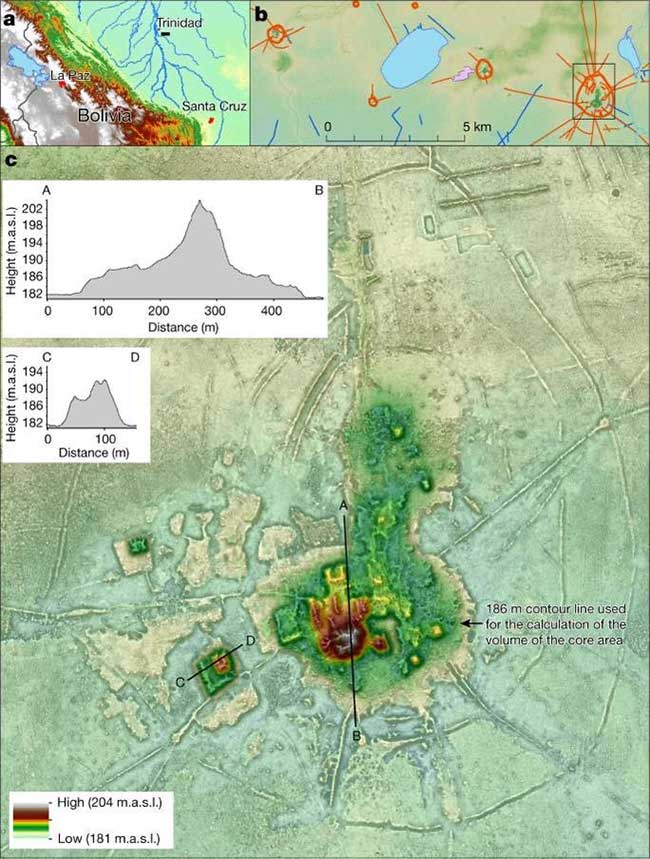A city with nearly 500 large and small structures, hundreds of kilometers of canals… emerges in the Amazon rainforest, combining ancient mystery with elements that belong to modern times.
According to Sci-News, a team of scientists led by Professor Jose Iriate from the University of Exeter (UK) utilized LiDAR, a laser surveying technology, to discover a great city in the Amazon rainforest, located in the area of Llanos de Mojos – present-day Bolivia.

One of the ritual structure clusters revealed in the mysterious Amazon city – (Photo: NATURE)
This is a large city belonging to the Casarabe culture, which thrived in this region from about 500 to 1400 AD.
“For a long time, we suspected that the most complex pre-Columbian societies developed in this part of the Amazon rainforest in Bolivia, but direct evidence was hidden beneath the forest canopy and difficult to access directly,” Professor Iriate stated, as quoted by Sci-News.
The modern remote sensing tool LiDAR helped them identify a series of unprecedented complex structures, unlike any previously discovered, including numerous houses, temples, terraces, and especially conical pyramids standing 222 meters tall in the city.
According to a publication in Nature, previously, low-density archaeological sites of the same era had been reported to exist beneath tropical forests in Southeast Asia, Sri Lanka, and a few areas in Central America. However, there has been no direct evidence of such sites in the Amazon region of Bolivia.
The newly revealed site emerges amid a desert-like forest, consisting of public ceremonial architecture including grand platforms and terraces, topped with U-shaped structures; mounds and rectangular platforms; and conical pyramids…
Large settlements surround the ceremonial area, forming a concentric polygon. The most notable aspect is that the entire city has a massive water management infrastructure, including extensive canals and reservoirs, built on well-drained land, extremely suitable for agriculture.
Remote sensing images have revealed a total of 189 large monuments (temples, public buildings), 273 smaller structures, 957 kilometers of canals and dikes… indicating that this is not an abandoned ceremonial site but a year-round living area for the people, covering an area of 4,500 km2.
For a long time, civilizations in Central and South America have amazed archaeologists with their construction skills and infrastructure that utilized technologies that would not appear for many centuries later. Notably, these included systems for distributing, filtering, and collecting water, which provided the inhabitants of these ancient cities with a comfortable life and facilitated agricultural development.




















































